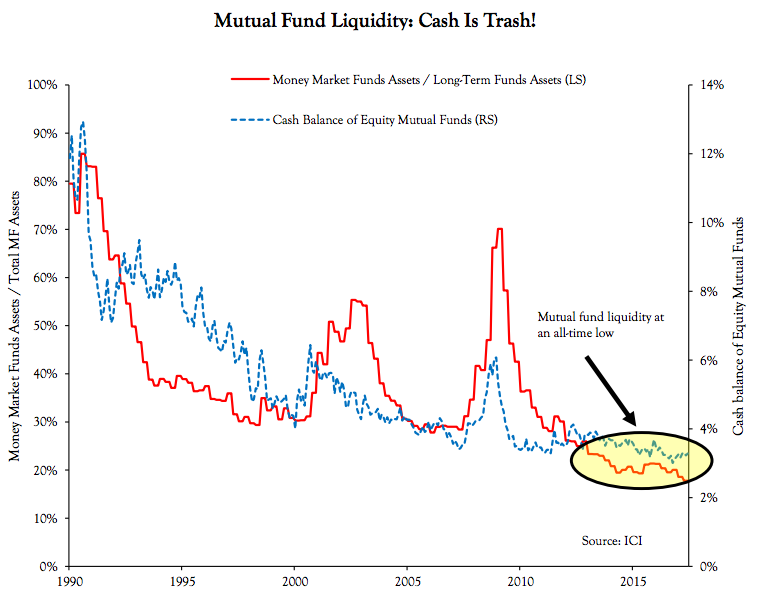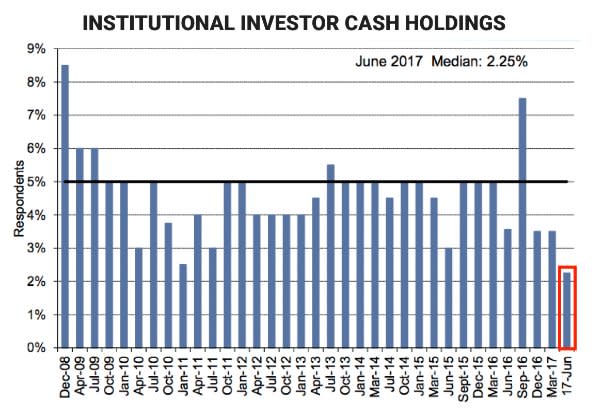- A growing number of firms are sounding the alarm on investor cash levels that have dropped near the lowest levels in history.
- Low cash levels are a threat to the ongoing equity bull rally, because it signals that investors are running out of money they can use to keep the market going higher.
The stock market has a cash problem.
As in, investors are running out of it, and the shortage could threaten the 8 1/2-year equity bull market that we’ve come to know and love.
It’s a new reality facing investors of all types. While money market assets make up a record-low 17% of long-term funds, the cash balance of equity mutual funds also sits at an all-time low of 3.3%, according to data compiled by INTL FCStone.
And the firm doesn’t mince words when discussing the increasingly dire situation.
“A decade of financial repression has turned cash into trash,” the firm’s macro strategist Vincent Deluard wrote in a recent client note. “There are a lot of fully-invested bears out there. There is not much sidelines cash left to push stocks higher.” INTL FCStone / ICI

Some of the market’s very biggest lenders have also highlighted dwindling investor capital. On Morgan Stanley‘s earnings call on October 17, chief financial officer Jonathan Pruzan said that “we’ve seen cash in our clients’ accounts at its lowest level.”
Strategists at Bank of America Merrill Lynch have repeatedly highlighted a similar development among their private clients. Cash for the group has dropped to a record low as a percentage of total assets, they wrote back in July. And while that could be interpreted as investor confidence, all the resolution in the world is meaningless if you don’t have capital to spare.
A few weeks earlier, also in July, Citigroup said that institutional investors they surveyed were holding roughly 2.25% of assets under management in cash, the lowest since at least the start of the eight-year bull market.

All of this combined marks an interesting twist for a stock market landscape that’s long been buoyed by the presence of money on the sidelines. Throughout the past couple years, bulls have cited that excess capital as waiting to flood back into stocks, pushing the market higher.
That argument holds less water now, and a red flag has been raised. After all, in 2000 and 2007, prior to bear market downturns, investors were confidently holding similarly low levels of cash.
It’s worth noting, however, that not every Wall Street bank is sounding the alarm over low cash levels. Goldman Sachs has been a notable holdout over the past few months, even going as far as to cite “normal” cash holdings as a reason the bull market can continue for longer. Their data finds that investors seeking returns are holding cash levels that equal 3.3% of mutual fund assets, in line with recent history.
Goldman’s differing outlook highlights the fact that there’s no exact way to know how much cash is readily available for deployment across the entire stock market. For that reason, opinions will continue to differ over whether or not we’re reaching a bearish tipping point.
But if the low-cash truthers out there are right, investors are going to have to sell if they want to free up money for other pursuits — or simply hold cash on the sideline. And that’s when things could get dicey.

